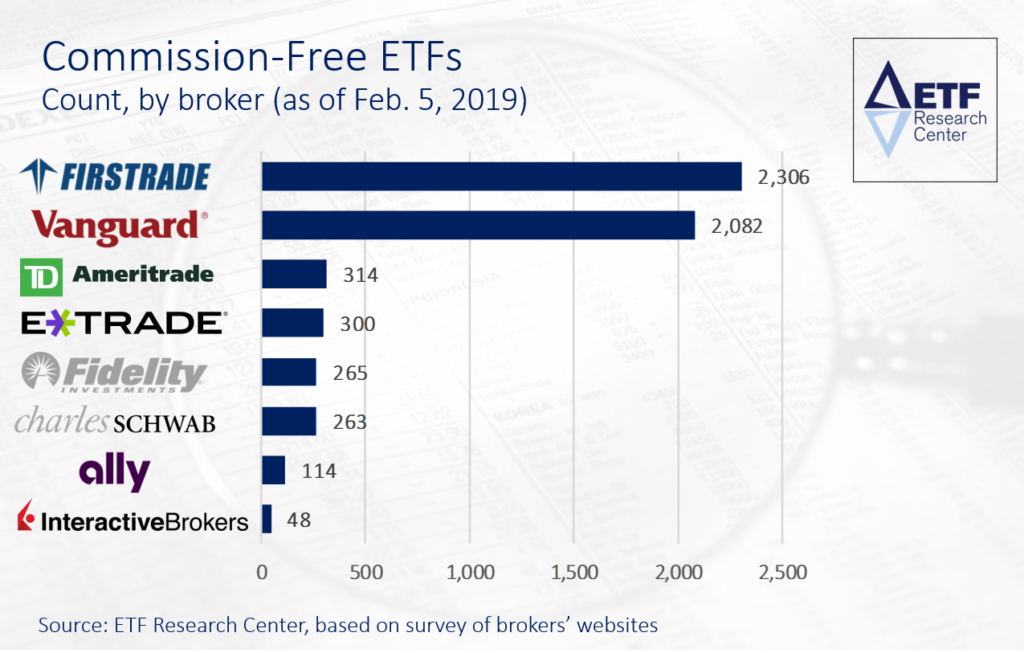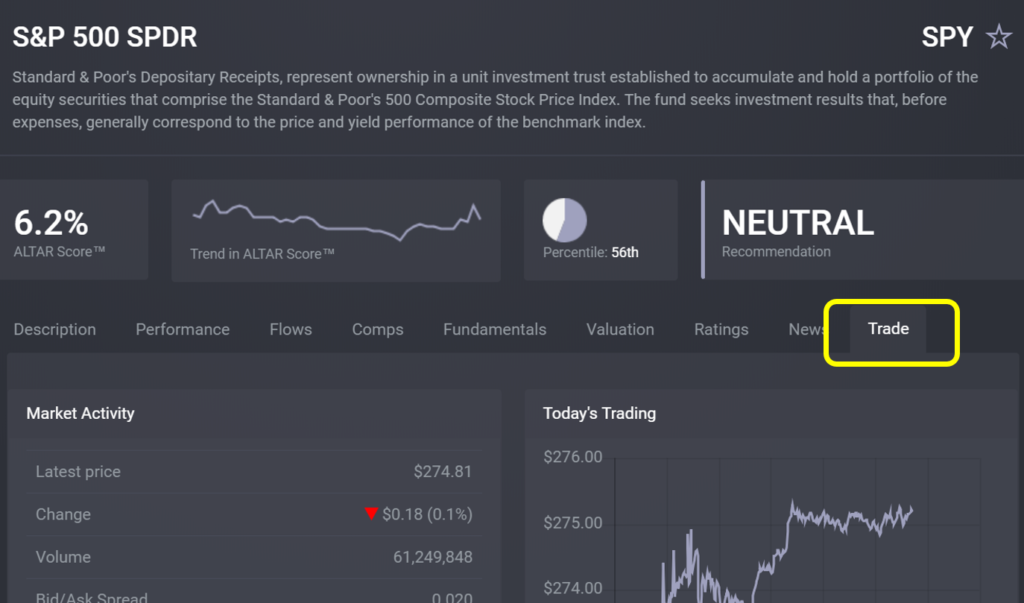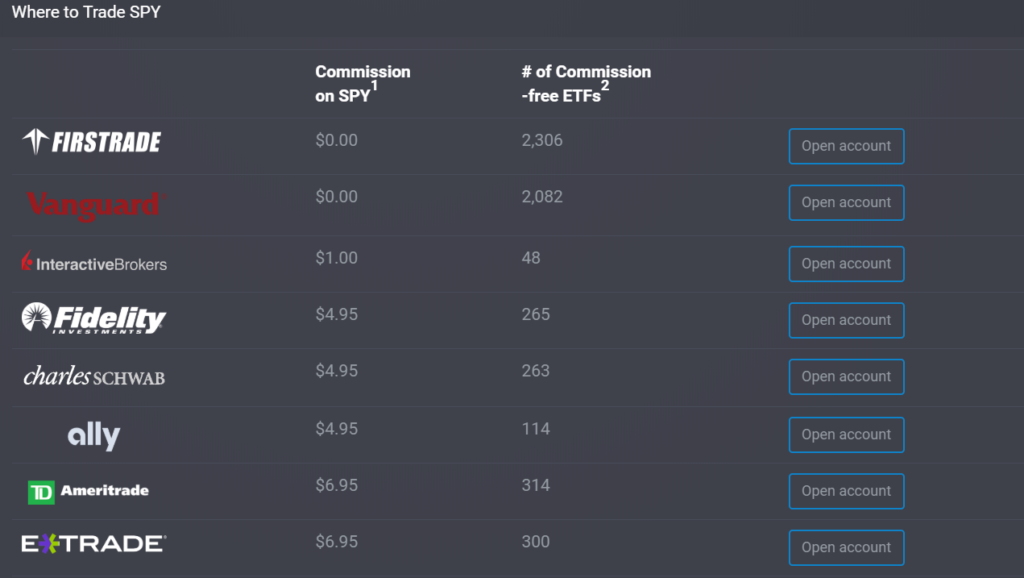
Trading commissions have long been an impediment to ETF investors wanting to make regular, relatively small-dollar purchases in some type of savings account, but that is rapidly changing. A growing list of brokers offer commission-free trading on an ever-increasing number of ETFs.
Commission-free ETF trading could be a game-change for investors who make regular, small additions to their accounts.
This could be a game-changer for an investor that wants to put, say, $200 from each bi-weekly paycheck into an ETF. A low commission of just $4.95 would still represent a 2.5% hit to returns before even getting started. Over a year these commission would add up to almost $120. Free trading changes that.
Why would brokers offer free ETF trades? It’s generally about gathering assets. Some ETF issuers compensate the brokerage firms directly to have their funds place on the brokers’ “commission-free” list, while some brokers like Fidelity and Vanguard initially made their own funds commission-free on their platforms in order to make their in-house funds stand out to their customers. (Both firms also have competing ETFs on their commission-free lists).
So which brokers offer the most commission-free ETFs? We found eight firms with published lists. Firstrade, a broker based in Flushing, NY, offers commission-free trading on all ETFs, which by our count number 2,306. In fact, Firstrade has no commissions on stocks, options or mutual funds either. They make money primarily from interest on credit and margin balances in customer accounts, so for them growing assets is key.
Figure 1: Commission-Free ETFs by Broker

Close behind is Vanguard, which offers commission-free trading on all ETFs on its platform, but does not accept orders for inverse or leveraged products. Six more brokers have smaller commission-free lists, as shown in Figure 1. However, Fidelity and Charles Schwab recently announced that they will be roughly doubling their commission-free lists as of February 28, 2019 and March 1, 2019, respectively.
But how do investors know if a particular ETF is available commission-free, and where? ETF Research Center has done the legwork here. Just enter the ticker symbol on the site as you normally would or put the fund’s ticker symbol in the URL like this: etfrc.om/SPY. That fund’s research page will come up. Click on the ‘Trade’ tab and scroll down, where you’ll see a table Where to Trade SPY (Figure 2).
Next to each broker’s logo will be a commission rate for the ETF in question. The figure will be $0.00 if the fund is on the broker’s commission-free list; otherwise the figure represents the broker’s standard commission rate for smaller accounts, based on our regular survey of the brokers’ websites. (Your commission may vary, based on account size, trading frequency and other factors). Also shown is each broker’s total number of commission-free ETFs. We expect these numbers to go up as firms compete for business.
| Figure 2: Click on the ‘Trade’ tab and scroll-down |

|
Interactive Brokers deserves an honorable mention here. Although its commission-free list is the shortest of the group at just 48 funds, its standard commission rate for other ETFs is $0.005 (half a penny) per share, with a $1.00 minimum (and 1.0% maximum) per trade. So an investor adding a few hundred dollars from each paycheck to his or her account would in most cases pay just $1.00 per trade.
One big caveat for active traders is that many commission-free ETFs have a minimum holding period
One big caveat for active traders is that many commission-free ETFs have a minimum holding period or other requirements. Sell the fund too soon and you could be subject to a penalty—often much higher than the standard commission would have been—that could make getting out of a losing position even more painful.
Although commission-free ETFs are a net positive for investors, they would be wise to remember that “Nothing is Free.” When trading an ETF they’ll still have to pay a bid/ask spread. Although these costs are almost negligible for the most popular funds, they can be much more for more thinly traded ETS, and they also vary with market conditions.
And of course, the larger your purchase or sale amount the larger the dollar value of the spread grows, so it can easily overwhelm any savings on commission. In some cases it may be better to pay a commission to trade fund A with a tighter spread than to trade fund B with a wider spread, even though the latter may be on your broker’s commission-free list. The average bid/ask spread for an ETF is shown on the ‘Performance’ tab of the fund’s research page, on the table titled Liquidity Measures.
Disclosure: This post contains links to one or more of our advertisers. We may receive compensation if you click on some of these links.




